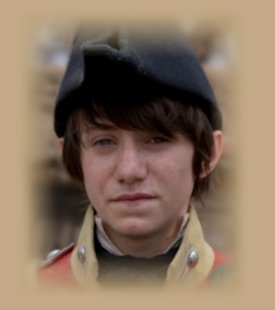Post by Voltaire on Jul 4, 2014 15:46:10 GMT
There were several Native American tribes in and close to the colonies during the time of the American Revolution. Several tribes would ally to form larger tribes. Many of these tribes had distinct differences although most of their life styles were very similar to each other. A few would have the same or very similar religion but most tribes had their own languages.
For clothing, they mostly wore deerskin outfits. The men would wear beads and jewelry to show their power and strength. Eagle feathers were a high honor for them. They would only earn them with great feats in battle. The face paint was not a usual thing but was used in war.
By this time, almost all had guns along with bow and arrows, spears, and possible swords. Since the settlers first entered the New World, they had been trading with the tribes. Also because of this, they were used to seeing a settler or two on their lands. However it is very possible that they had never spoken to or observed the settler for a long time. Going to a large city would throw them completely out of their element.
The Native Americans were not happy about the expansion of people into the West. Many farmers and settlers would force the tribes to move from their home. They would destroy everything, farm the land of its nutrients, and then leave. Constantly, the tribes would raid the famers by killing them and burning their houses. However, in return, the farmers would do the same. Despite the hatred, several tribes started to rely greatly on the colonist with trade. They would get food, clothing, guns, and other sorts from the settlers that they could not get themselves.
During the American Revolution, almost all of the tribes sided with the British. At the beginning, the patriots tried very hard to keep the Native Americans neutral. However the tribes did not like the expansion which the British restrained. Many tribes did try to stay neutral but eventually took a side. Many acted as translators, fighters, spies, and gave strategic advice.
List of tribes during the revolution:
Cherokee (British)
Creek (British)
Choctaws (British)
Chickasaws (British)
Iroquois Confederation
Mohawk (British)
Oneida (Colonists)
Onondaga
Cayuga (British)
Seneca (British)
Tuscarora (Colonists)
Several others…
More information:
(www.americanrevolution.org/ind1.html)
For clothing, they mostly wore deerskin outfits. The men would wear beads and jewelry to show their power and strength. Eagle feathers were a high honor for them. They would only earn them with great feats in battle. The face paint was not a usual thing but was used in war.
By this time, almost all had guns along with bow and arrows, spears, and possible swords. Since the settlers first entered the New World, they had been trading with the tribes. Also because of this, they were used to seeing a settler or two on their lands. However it is very possible that they had never spoken to or observed the settler for a long time. Going to a large city would throw them completely out of their element.
The Native Americans were not happy about the expansion of people into the West. Many farmers and settlers would force the tribes to move from their home. They would destroy everything, farm the land of its nutrients, and then leave. Constantly, the tribes would raid the famers by killing them and burning their houses. However, in return, the farmers would do the same. Despite the hatred, several tribes started to rely greatly on the colonist with trade. They would get food, clothing, guns, and other sorts from the settlers that they could not get themselves.
During the American Revolution, almost all of the tribes sided with the British. At the beginning, the patriots tried very hard to keep the Native Americans neutral. However the tribes did not like the expansion which the British restrained. Many tribes did try to stay neutral but eventually took a side. Many acted as translators, fighters, spies, and gave strategic advice.
List of tribes during the revolution:
Cherokee (British)
Creek (British)
Choctaws (British)
Chickasaws (British)
Iroquois Confederation
Mohawk (British)
Oneida (Colonists)
Onondaga
Cayuga (British)
Seneca (British)
Tuscarora (Colonists)
Several others…
More information:
(www.americanrevolution.org/ind1.html)








